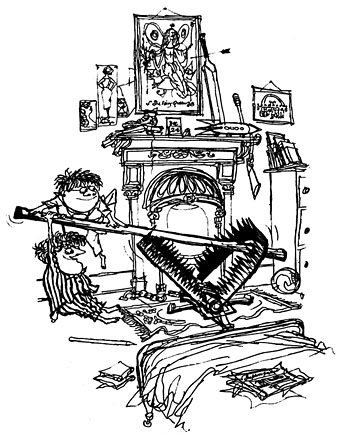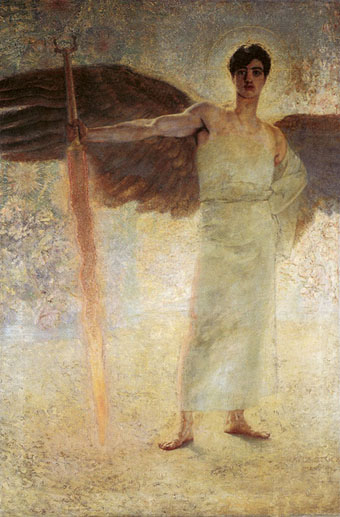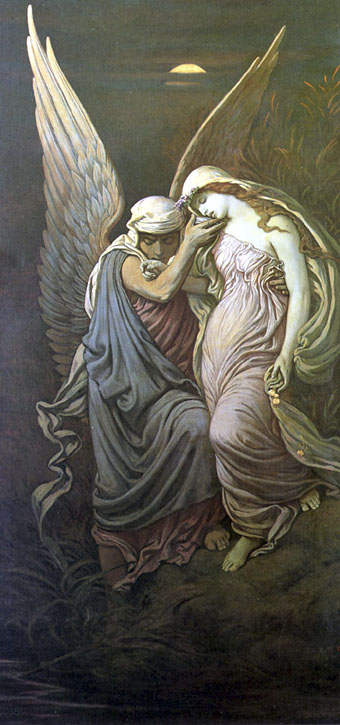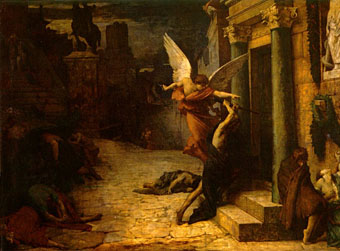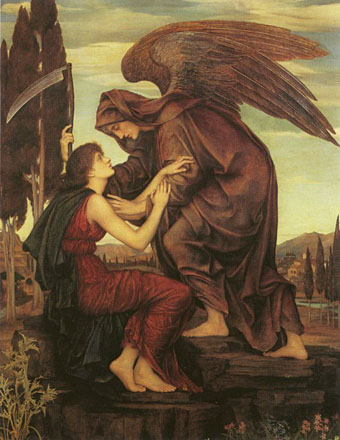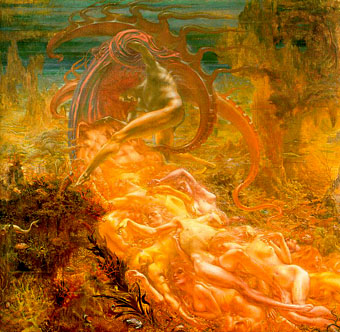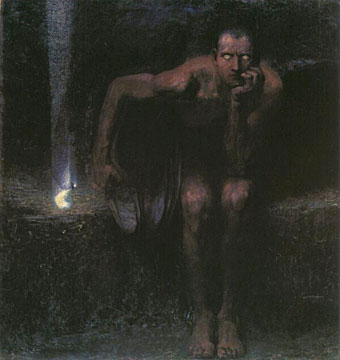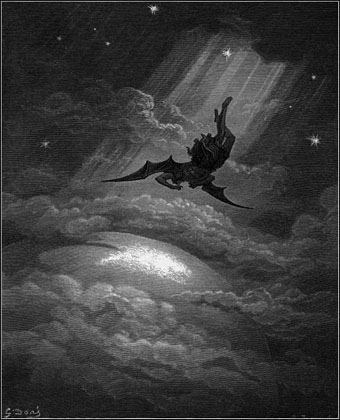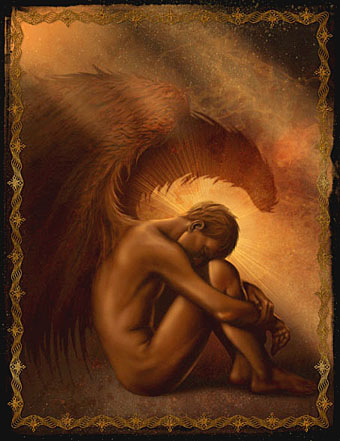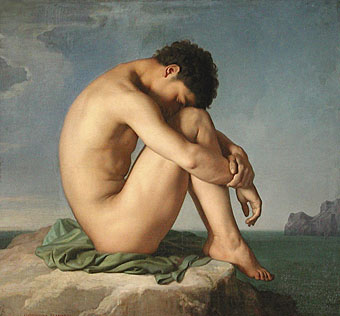“A trap for dere Santa”. From How to be Topp by
Geoffrey Willans and Ronald Searle (1954).
That time of year again. Here at { feuilleton } we prefer to acknowledge the solstice-based traditions that pre-date the usurping rituals of Middle Eastern sky gods. The old pagan business of lighting fires and creating artificial light and warmth still makes sense when you’re in the depths of another dreary English winter, with seemingly permanent grey skies and a smear of daylight that vanishes at half past three in the afternoon. Christmas used to agitate me too much and too often until the year the TV finally gave up the ghost. I realised a lot of the prior aggravation had been caused by the deluge of trivia that popular media creates at the end of the year; keep away from TV, avoid the crowds and the collective hysteria become a lot more manageable.
This page will be quiet while I visit the family for a few days but the archive feature will be active should you be seized by a sudden desire to read my words or look at some pictures. If you’re sat in front of a monitor over the coming week—and for some this may be a necessary escape—I’d suggest looking over some of the mp3 blogs that have been coming online in the past year. These are from people (usually anonymous for good reason) posting whole albums for download, many of which still haven’t made it onto CD. Hard to say how long this phenomenon will be allowed to continue in its current form—a lot of these places are using Blogger, so may be shut down by Google eventually—but for now its an encouraging trend. A by-no-means-definitive list follows below. These are only the ones I’ve run across recently, liked and bookmarked; if you know of any other good ones, feel free to leave a tip in the comments.
Fauni Gena Music Webbernet. Mainly ambient or quiet electronic releases.
À bientôt j’espère. Er…hard to describe, you’ll just have to go and look.
Lost-In-Tyme. Obscure psychedelia for the most part.
Swen’s blog – Artists mentioned in The Wire. What it says on the tin. Very useful if you’re a Wire reader.
Improvisie. Improvised music with an emphasis on the jazz spectrum. Not much there yet but may be worth watching and worth a visit solely for the insane Paul Bley synth album. (Thanks to Gav for the tip!)
Grown So Ugly. “A home for musical gems from the past fifty years, decidedly biased in favor of acoustic instrumentation. From the easily accessible to the challenging listen, quality is the sole requirement for our sharity. We encourage community participation.” (Thanks to Jay for pointing me to this one.)
Krautrockteam. Best of the lot where my tastes are concerned. More obscure (that word again…) German music than you can shake an Archangel’s Thunderbird at.
Previously on { feuilleton }
• The music of The Wicker Man

